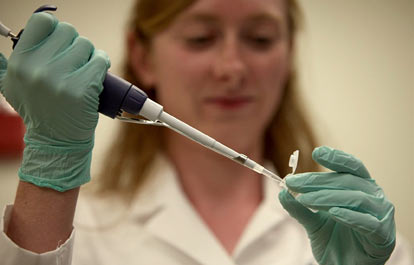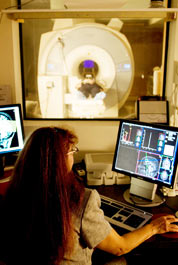

Information Technology //
MRN's computing infrastructure consists of approximately 250 computers and ~1.2 Petabytes of network attached storage that consolidates all research data to facilitate easy access and retrieval. Desktop workstations are fed by Gigabit Ethernet connections to a high availability data center that houses core services as well as multiprocessor compute servers.
Computing Environment/Applications
Scientific end users are able to access the MRN resources using a single sign on environment that enables sharing of data across the Windows, Linux and Macintosh platforms. The data center houses several large shared memory systems (~20 cores & 128GB RAM on average up to 80 cores and 1GB RAM per machine, several with multi-GPUs included). Additionally there are currently over 30 image analysis and neuroinformatics applications installed and administered uniformly across all workstations. Primary data analysis packages are MATLAB, SPM, GIFT/ICA, AFNI, FSL, Python and FreeSurfer. FreeSurfer currently runs on one of MRN's 32 processor clusters.
The data center is backed by a 30 KW N+1 UPS Uninterruptible Power Supply (expandable to 80KW). Data center air conditioning is protected by a diesel generator for emergency power and all power and cooling systems are monitored by IT staff 24/7.
Network
All desktop workstations communicate with MRN's data center and network attached storage via dual redundant fiber links. MRN is connected to the Internet via gigabit fiber to a 100 megabit per second link on the University of New Mexico's campus. A Virtual Private Network allows researchers and collaborators to access MRN computing resources remotely through an encrypted link.
Acquisition/Storage
Data acquisition computers across all modalities (1.5T Mobile, 3T, MEG, EEG) have standardized stimulus delivery systems i.e. pupilometry, audio, video and time coding. The mobile data acquisition system includes a group of centrally managed, workstations used for psychological assessment, digital video and document imaging in forensic populations. The network attached storage systems are a combination of fully replicated high availability EMC storage totaling ~1.2PB of usable disk space. Research data is stored in a self documenting directory hierarchy (both raw and processed).

